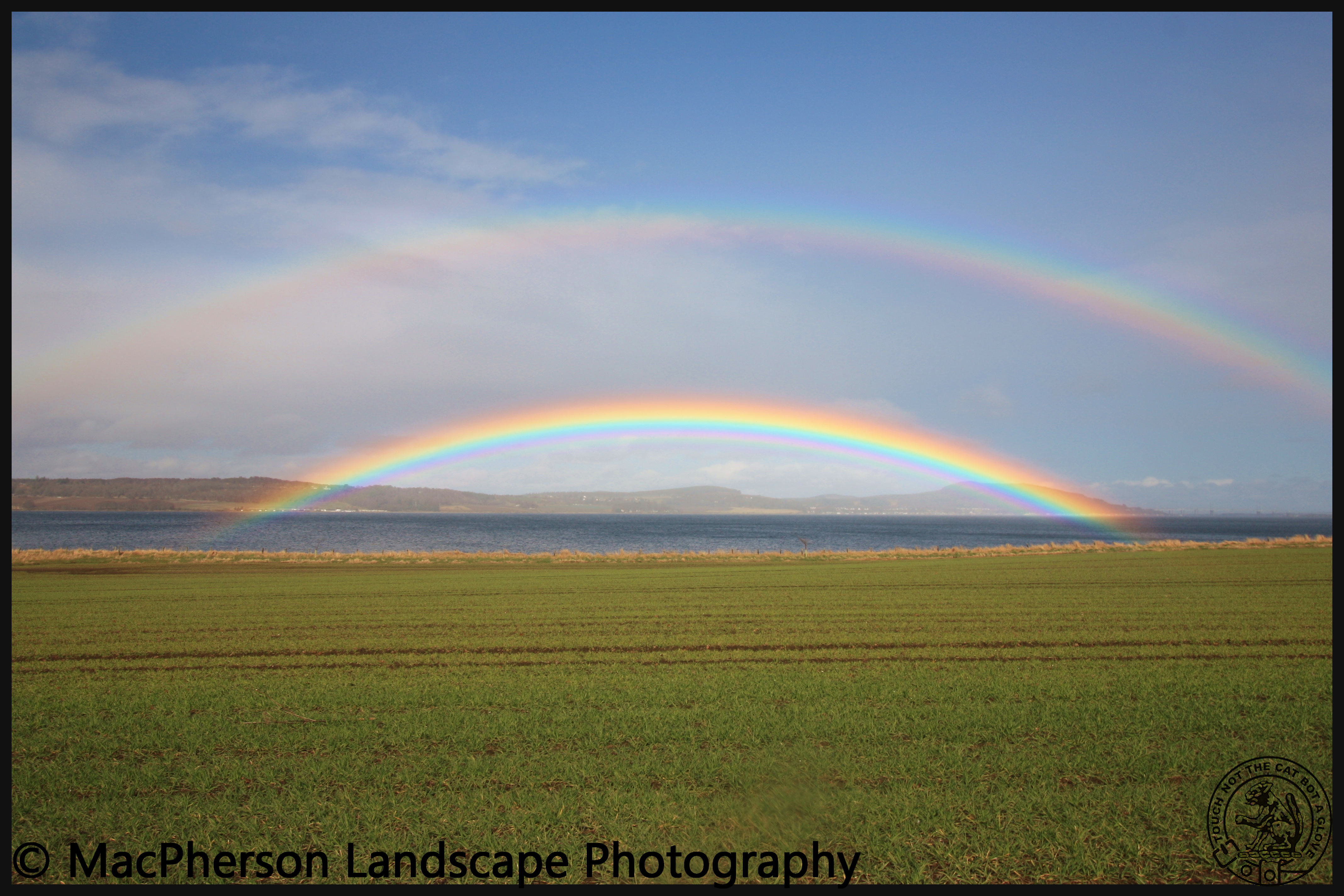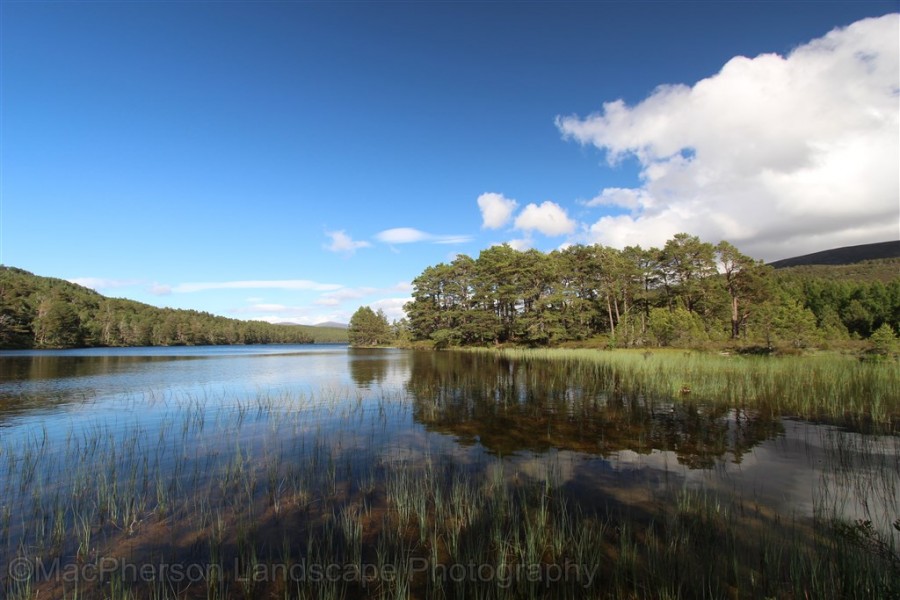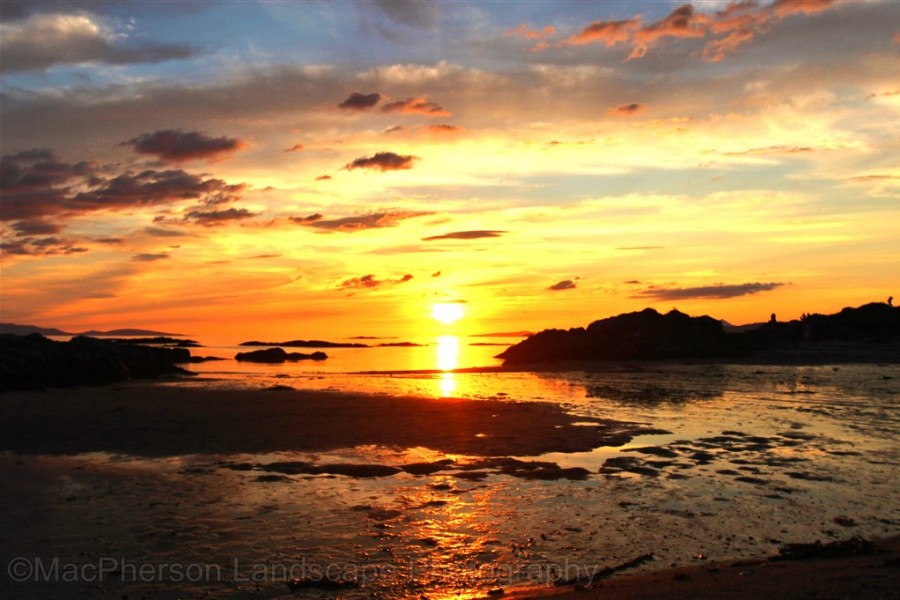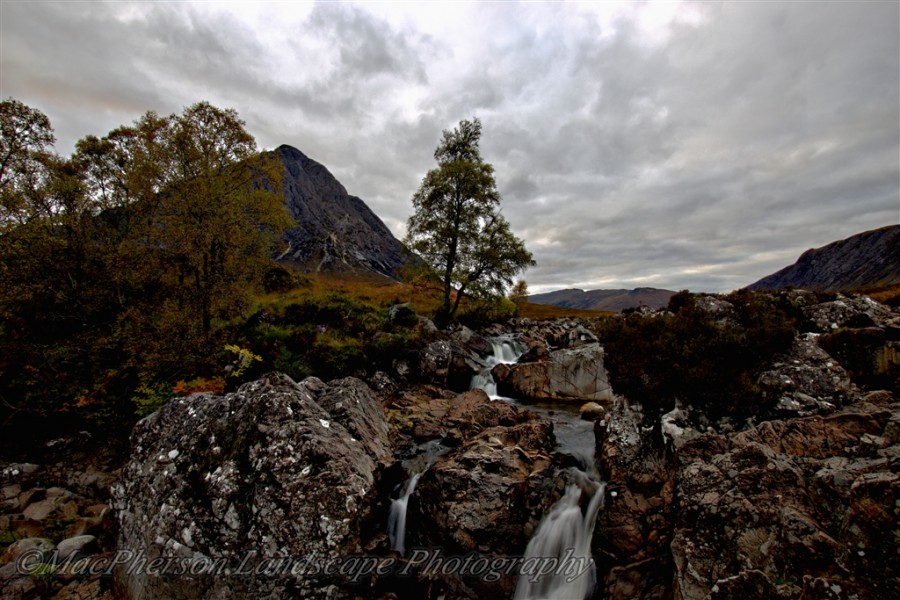This shot was taken last April as we were travelling to Glen Affric, and I was in awe of the clarity of the colours from the rainbow contrasting with the natural landscape. As always it’s sometimes the photographs you get by chance turn out the best. However there was nowhere to stop on our side of the road, so it was a challenge trying to find somewhere to safely turn the car, to backtrack to capture this image, all the while keeping fingers crossed this wonderful natural phenomena would still be there, as you can see it was.
I love April for these kind of shots, as the April showers and Spring sunshine are competing for dominance, the weather creates these wonderful vistas.
Rainbows appear when raindrops reflect sunlight, acting like a prism, which breaks white sunlight into colours. Each colour seen in a rainbow is from different raindrops.
As light enters a water droplet, the different wavelength colours bend at slightly separate angles. Some of this light reflects off the back of the droplet and is bent a second time as the droplet emerges from the light beam. Drops at different angles send distinctively different colours to the eye.
If light is hitting raindrops at a proper angle, a secondary, larger rainbow will appear outside of the main rainbow, creating a double rainbow As the light has been reflected twice by each raindrop, the second rainbow is fainter in colour than the main one. This double reflection also reverses the colours in the secondary rainbow.
To see a rainbow, an observer must have their back to the sun and rain must be falling in some part of the sky. Since each raindrop is lit by the white light of the sun, a spectrum of colours is produced.
No two people see exactly the same rainbow, as each person observes a different set of drops at a slightly different angle.



